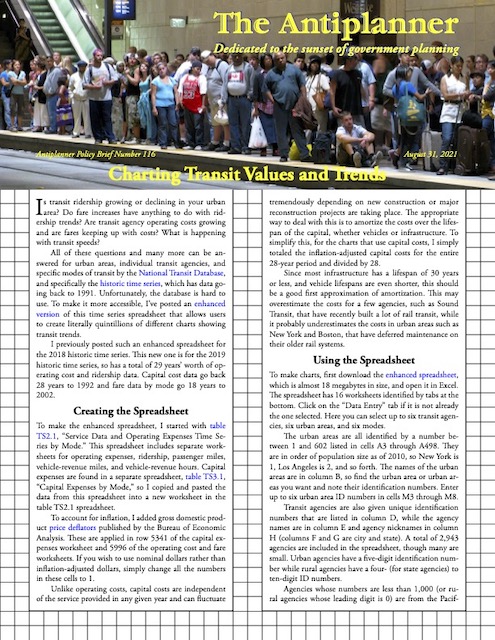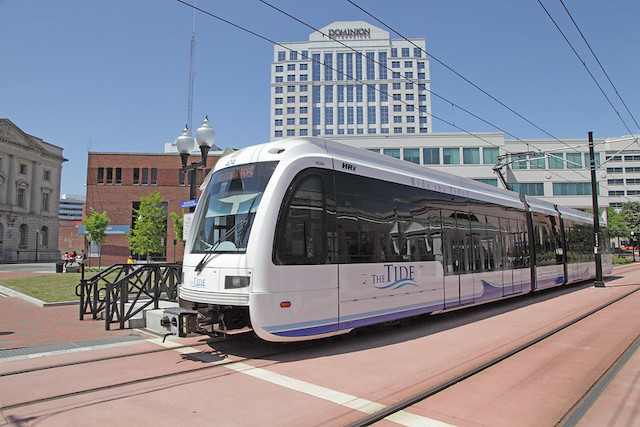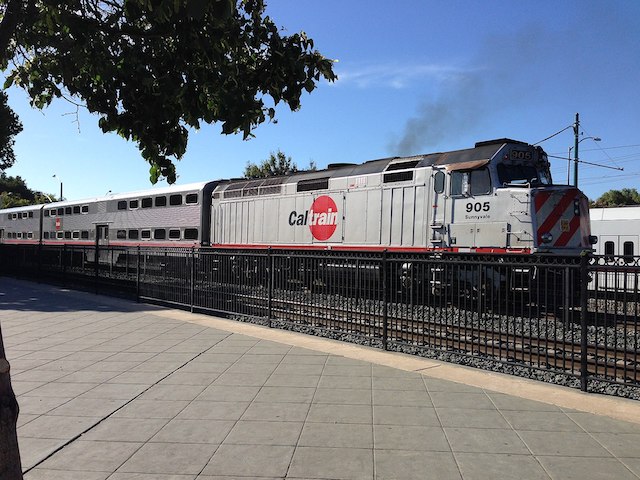President Biden and Democrats in Congress want to spend trillions of dollars on a green new deal. But their true colors are revealed when it comes to railroad re-regulation: the needs of the environment are less important than the needs of labor unions and shippers who want the federal government to exercise more control over the railroads.
This container train is saving thousands of tons of greenhouse gas emissions, savings that will be lost if regulation allows trucks to capture some or all of this traffic. Photo by David Jordan.
This is made clear in a report that was released yesterday by the Reason Foundation. Written by the Antiplanner’s faithful ally, Marc Scribner, Pathways and Policy for 21st Century Freight Rail points out that railroads produce less than 10 percent as much carbon dioxide per ton-mile as trucks. As the Antiplanner observed a few weeks ago, the railroads have become more competitive with trucks since deregulation took place in 1980. Continue reading


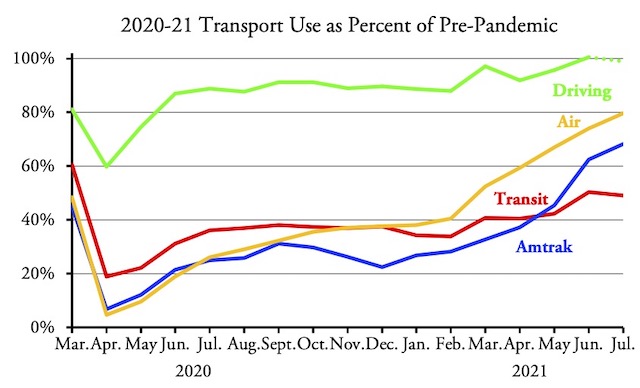
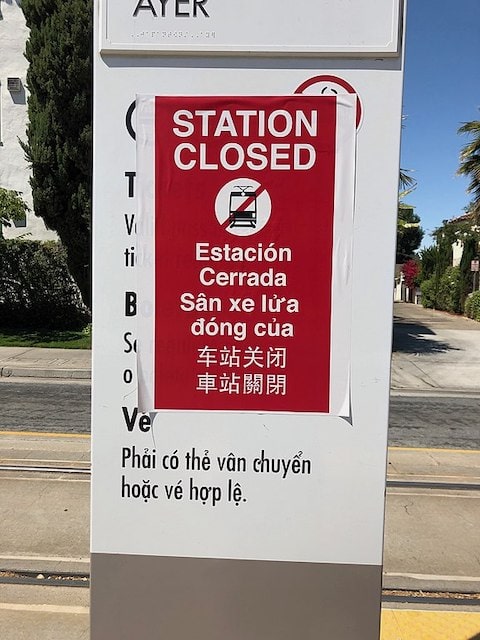 VTA closed its light-rail system for more than three months and part of the system will be closed for even longer.
VTA closed its light-rail system for more than three months and part of the system will be closed for even longer. 